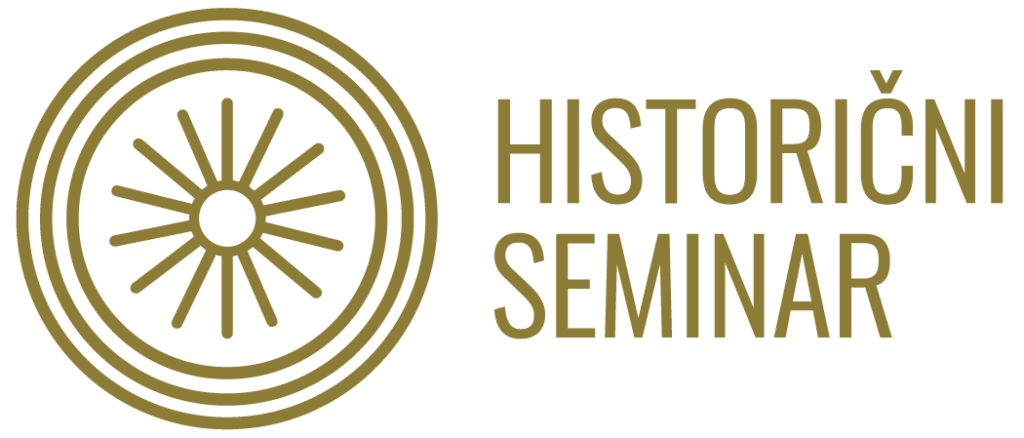INSTRUCTIONS TO LECTURERS WHO WISH TO PUBLISH THEIR LECTURES AS ARTICLES
Typescripts should be written in MS Word format (font Times New Roman, size 12, line spacing 1,5). The text should be submitted without styles (except bold and italics), and it should be aligned left. Graphical elements should not be included in the MS Word document. Instead, they should be submitted separately in the EPS, JPG, TIF or similar standard format with a minimum 300dpi/150lpi resolution (single colour print) or 350dpi/175lpi (standard colour print). The position of the graphics should be indicated in the text (e. g. Plate 1: Title). All the examples and illustrations must clearly indicate the name of the site, archive or library. Permissions for the publication of the copyright-protected material are to be obtained by the authors and are their responsibility.
Typescripts should normally be submitted to peer-review in 30 days after the lecture. The typescript length is limited to 45.000 characters with spaces, including footnotes and bibliography list. Authors should also submit an abstract (maximum 50 words), summary (maximum 300 words) and key words(maximum 5 key words). Manuscripts should also contain the title, abstract, summary and key words in English (if the article is not in English) or in Slovene (if the article is in English). Authors are entirely responsible for the language of their contributions. Author’s data should be included (name and surname, academic title, profession, occupation and work-post, name and address of the institution, e-mail address). The text will be sent back to the author when the peer-review is finished; after that, the author should send the completed text back to the editor in three weeks.
The citation form should be as follows:
Quotations in the text should be given in double qoutes “ ”.
Footnotes should be uniform, i.e. authors should use footnotes (below the line at the end of the page) rather than notes within text or endnotes. Footnotes should include brief indications with the surname of the quoted author, abbreviated title of the quoted work and the page number(s) (e. g. Vodopivec, Od Pohlinove slovnice, p. 10). In the case of archival materials, standard abbreviations should be used for archives, after which abbreviations of the fond or collection, signature or file or box number and the number of archival unit or the document’s title should be added.
The examples of the citations in the footnotes for the units below are given below the line.
In the sources and bibliography list (the last part of the article), all sources and literature mentioned in the footnotes should be indicated alphabetically (after the surnames of the authors). Archival material, literature, newspapers, oral statements, music editions etc. should be indicated separately. Where necessary, the abbreviated indications from the footnotes should be explained.
Examples (cf. The Chicago Manual of Style):
SOURCES
Archival sources:
Arhiv Republike Slovenije (SI AS) 1080, Zbirka Muzejskega društva za Kranjsko, Muzejskega društva za Slovenijo in Historičnega društva za Kranjsko.1
Österreichische Staatsarchiv (ÖSA), Allgemeines Verwaltungsarchiv (AVA), Ministerium des Innern.2
Newspaper article:
Ogrinc, Viljem. “Nektere opombe k J. Jesenkovi ‘zemljepisni začetnici’”. Slovenec, 25 November 1865.3
LITERATURE
Book:
Lavrič, Ana. Vloga ljubljanskega škofa Tomaža Hrena v slovenski likovni umetnosti. 2 vols. Razred za zgodovinske in družbene vede, Dela 32; Umetnostnozgodovinski inštitut Franceta Steleta 1. Ljubljana: SAZU, 1988.4–5
Kos, Dušan. Zgodovina morale. Vol. 1, Ljubezen in zakonska zveza na Slovenskem med srednjim vekom in meščansko dobo. Thesaurus memoriae, Dissertationes 10. Ljubljana: Založba ZRC, ZRC SAZU; Zgodovinski arhiv Ljubljana, 2015. https://doi.org/10.3986/9789612548407.6
Kokole, Metoda, Barbara Murovec, Marjeta Šašel Kos and Michael Talbot, eds. Mediterranean Myths from Classical Antiquity to the Eighteenth Century. Ljubljana: Založba ZRC, ZRC SAZU, 2006. https://doi.org/10.3986/9789612541781.7
Chapter in a book:
Štih, Peter. “The Slavic Settlement and Ethnogenesis”. In The Land Between: A History of Slovenia, 2nd ed., edited by Oto Luthar. Frankufrt am Main: Peter Lang, 2013.8
Journal article:
Ličen, Daša. “Naturwissenschaftler im Triest der späten Habsburgermonarchie: eine national indifferente Insel im Getöse der zeitgenössischen Politik?”. Österreichische Zeitschrift für Geschichtswissenschaften 35, no. 2 (2024): 187–210. https://doi.org/10.25365/oezg202435210.9
Disertation:
Deželak Trojar, Monika. “Janez Ludvik Schönleben (1618–1681) v luči arhivskih virov, njegovega zgodovinskega in retoričnega opusa”. PhD diss., Univerza v Mariboru, 2015. https://dk.um.si/IzpisGradiva.php?id=55468.10
Website:
Adamič, Alenka, and Antonija Adamič Levart. “Biografija Bojana Adamiča”. Accessed 24 November 2023. http://www.bojan-adamic.si/biografija/. 11
—————————————————————————————————————————————-
1 SI AS 1080, box 8, folder 11, Civitatensia, Krško, mestna knjiga.
2 ÖSA, AVA, Min. des Innern, 36/4, box 30, no. 14779.
3 Ogrinc, “Nektere opombe”.
4 Lavrič, Vloga ljubljanskega škofa, 1:23.
5 Ibid.
6 Kos, Zgodovina morale, 62–63.
7 Kokole et al., Mediterranean Myths, 76.
8 Štih, “Slavic Settlement and Ethnogenesis”, 83.
9 Ličen, “Naturwissenschaftler im Triest”, 197.
10 Deželak Trojar, “Janez Ludvik Schönleben”, 278.
11 Adamič and Adamič Levart, “Biografija Bojana Adamiča”.
